$13.5 million SUNY New Paltz Engineering Innovation Hub earns LEED Gold certification
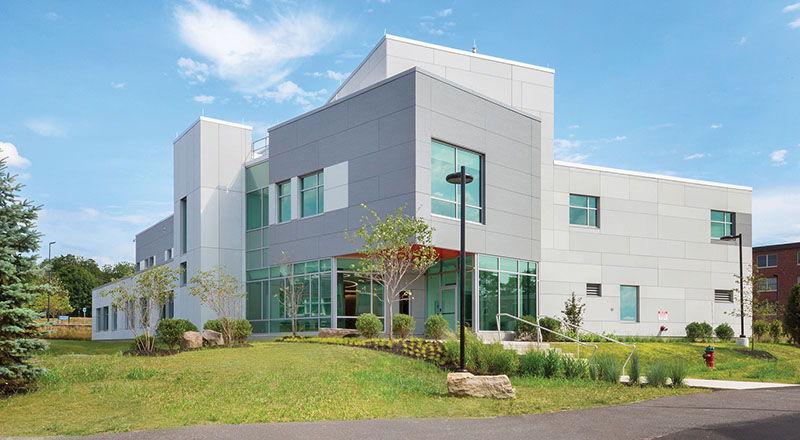
New Paltz, NY The new Engineering Innovation Hub (EIH) building at the State University of New York (SUNY) at New Paltz has earned a coveted LEED Gold Certification award from the U.S. Green Building Council (USGBC). Urbahn Architects led the design team for this $13.5 million project. The general contractor was PC Construction. The two-story, 19,500 s/f building houses the college’s bachelor’s degree program in mechanical engineering and includes innovative teaching and research lab spaces, as well as the Hudson Valley Additive Manufacturing Center (HVAMC) at SUNY New Paltz.
The project team includes mechanical and electrical engineer Vanderweil Engineers, plumbing engineer CSA Group, structural engineer LERA Consulting Structural Engineers (LERA), LEED consultant YR&G, civil engineer BET Engineering Consultants, landscape designer Edgewater Design, lighting designer Lumen Architecture, and cost estimator Ellana, Inc.
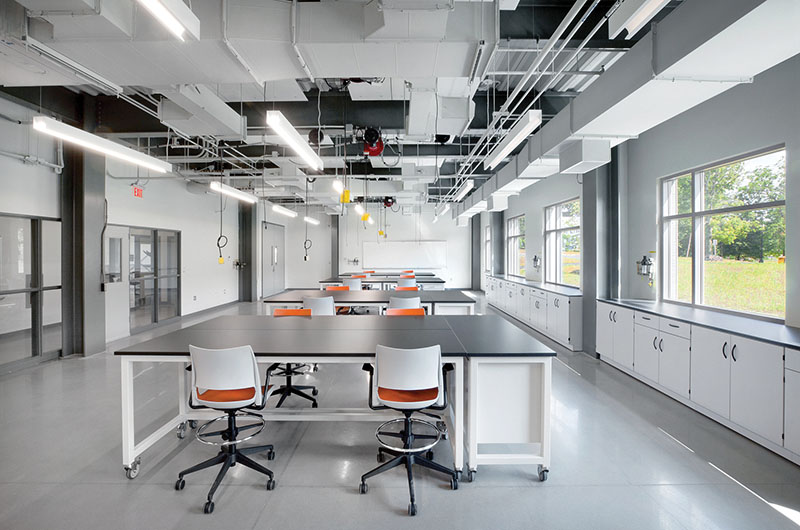
The new EIH was made possible by governor Andrew Cuomo’s NYSUNY2020 Challenge Grant competition, in which SUNY New Paltz was awarded $10 million to support academic programs that translate directly into economic development in New York State. The college also received $1 million through the governor’s Mid-Hudson Regional Economic Development Council’s annual Consolidated Funding Application.
“The Engineering Innovation Hub houses industry-leading equipment to support our students and faculty as well as the work of companies partnering with the college through 3D design and printing,” said SUNY New Paltz president Donald Christian. “We thank the governor and his team for recognizing the value of this project, and our Facilities staff and external partners for working hard to achieve this well-earned LEED Gold distinction.”
SUNY New Paltz initially placed a goal of LEED Silver for the building design. According to Natale Barranco, AIA, LEEP AP, Urbahn Architects principal-in-charge, “The design of this project to meet LEED criteria was a challenge, because the construction budget was relatively modest. However, every step of the project, from preliminary design through construction, was made with the goal of achieving the highest LEED rating possible in mind, and we were able to meet the criteria for Gold certification through a collaborative effort with the entire project team.”
“The important lesson learned from this project is that an efficient, sustainable building can be designed within the confines of a limited budget,” adds Urbahn Architects’ senior associate Nandini Sengupta, LEEP AP. “Bring in seasoned design consultants early in the conceptual phase, and perform continuous energy modeling starting in the conceptual design phase,” she advises designers and owners. “For this project, the client, design team, construction manager, and contractor were all very methodical from the beginning to enable the building to achieve a high LEED rating. The final building envelope and mechanical systems designs have resulted in an energy cost savings of 28%.”
The EIH is centrally located within SUNY New Paltz’s campus, near the existing Resnick Engineering Hall. The building supports the college’s mechanical engineering program that has seen rapid enrollment growth since its 2014 launch, as well as the HVAMC, described below. Urbahn designed the EIH to allow for a potential expansion of the building to accommodate this academic programming and support collaboration between the college and local industry. The hub directly addresses the region’s need for talented engineers and prepares students to thrive in forward-looking careers.
“SUNY New Paltz is always striving to reduce our carbon footprint and to find state-of-the-art approaches to sustainability on campus,” said John Shupe, assistant vice president of facilities management. “We are thrilled that this is our fifth LEED Gold building on campus. I’d like to commend our team for all their work in achieving this milestone.”
“Relying on our team’s expertise in LEED certification procedures and the Lean Construction method, we have delivered a highly sustainable and energy efficient facility where engineering students can excel for years to come,” said Michael Davies, PC Construction project manager. Over 86% of the project’s construction waste was diverted from landfills.
The Hudson Valley Additive Manufacturing Center (HVAMC), which has been providing education, guidance, CAD design, advice on materials used for additive manufacturing, and 3D printing services to SUNY New Paltz students and educators as well as to entrepreneurs and businesses since 2013, operates a laboratory and offices in the new building. The HVAMC’s collection of 3D printers constitutes some of the most advanced technology at any academic laboratory in the U.S. The college is the first institution of higher education in the nation to be designated a Stratasys-MakerBot Additive Research & Teaching or SMART lab by Stratasys, the world’s leading 3D printing hardware and systems company.
Sustainable Site Design and Landscape Components
The design of a 31,200 s/f landscaped site contributes to the project’s sustainability. The project team addressed the LEED category of Sustainable Sites and Water Efficiency in several innovative ways. The entire building site was formerly covered by a parking lot and the new site plan was developed to maximize the open green area surrounding the building footprint. “Slab-on-grade foundation design eliminated the need for extensive and costly rock excavation that is typical for construction projects in the Catskill Mountains region,” said Nandini Sengupta.
“Our design intent was to provide a native, low maintenance landscape that would provide maximum seasonal interest, while complimenting the existing campus landscape,” said Jan Saltiel Rafel, ASLA, LEED AP, principal, Edgewater Design LLC.
Landscaped bioswales direct rainwater into a 45-ft. long retention pond that is provided with a weir and overflow gate to control discharge. Ground water under the building footprint is also drawn into the pond through underground perforated pipe, preventing a rise in hydrostatic pressure that could potentially drive moisture into the building. Large boulders recovered from the site during excavation were reused around the bioswale to provide landscape interest. The bioswale has been planted with native evergreen shrubs, eco mix seed, and grasses.
“All plant material has been selected from a drought-resistant northeast native palette of evergreen, deciduous, and herbaceous plant types, and was chosen to provide seasonal interest throughout the year,” said Rafel. Flowering trees include Dogwood, Magnolia Virginiana, Cercis Canadensis and Hammamelis. Swamp White Oak trees provide shade. Beds surrounding the building incorporate low maintenance plants including Ilex glabra, Viburnum, Rhus aromoatica, Panicum, Sprobulus, Deschamsia, and Schizachyrium. Edgewater Design worked closely with the college’s facilities management team to develop an ongoing maintenance plan for the new landscape. “Even though the plant material is low maintenance in the long-term, weeding and irrigation were initially required until the plants established themselves.”
In addition to the landscape design, LEED points were also awarded for several features of the building and its location. The building’s roof is a white reflective TPO (thermoplastic polyolefin) membrane system, with added insulation to improve the R-value. This composition reduces the heat island effect by providing a high solar reflectance index. The building is close to public transportation stops, and provides bicycle storage to decrease reliance on private fossil fuel vehicles.
Energy Conservation and Indoor Environmental Quality
Urbahn placed particular emphasis on maximizing daylighting and views throughout the building without compromising energy efficiency. “EIH’s ground floor lobby is wrapped in a glass storefront and glazed curtain wall systems to allow natural light into the interiors. The lobby serves as a collaborative study and social space with extensive writable surfaces, where students can collaborate outside the classroom setting,” said Urbahn’s project manager Arielle Siegel Lapp. “Window headers are located nine feet above the floor so that light can penetrate deep into interior spaces. Our team analyzed several glazing options to maximize the energy efficiency of the exterior walls, and ultimately designed window assemblies using double glazed low-E glass that provide ideal comfort levels, daylighting, and views while utilizing less than 30% of the exterior wall surface. All regularly occupied spaces have line of sight views of the campus,” she adds.
Lighting is provided by high efficiency LED fixtures, some featuring a ring like curvilinear configuration, provided with light sensor controls. As the building fills with natural light flooding through the high windows during the day, light fixtures automatically shut off to conserve energy, and turn on again as exterior lighting conditions change with nightfall.
Vanderweil Engineers performed energy modeling throughout the design phase to optimize the performance of the HVAC systems. They worked within the limited budget to select mechanical components that would meet the LEED criteria. Heating and cooling are provided by a custom Nortek Ventrol air handling unit with Fanwall technology, 30,000 cfm, 890,000 BTU. The cooling tower is Carrier 30RB080 unit with 80 ton capacity. Additional equipment was manufactured by Mitsubishi and Nailor, and BMS is provided by Siemens. The designers chose HVAC and fire suppression systems that minimized ozone depleting chemicals.
The use of water saving plumbing fixtures has resulted in a 31% reduction in the consumption of potable water.
The project plays a continuing part in the education of the students who are the ultimate building occupants. During planning and construction, engineering students toured the site and sat in on team meetings to learn how to plan and maintain an energy efficient facility.
Building Materials and Resources
According to Urbahn Architects’ construction administrator Manuel Mateus, “When selecting building materials, the design team considered several factors, including local sourcing, recycled content, and performance values. The exterior walls feature an ultra-high-performance energy efficient rain-screen system that minimizes heat loss by eliminating thermal bridging. The system face consists of concrete panels by Taktl in both a light gray smooth finish and a dark gray textured finish. Each panel has ColorSeal and MicroSeal coatings to help with color and water resilience for extended durability. The rain screen is anchored to a stud backup, and the assembly provides a balance of pressure behind the wall that inhibits water infiltration into the building interior.”
The red soffit above the main entrance is composed of Vitrabong 4mm FR lightweight metal composite material (MCM) cladding panels in Rubis Red color. Vitrabond panels are composed of a 3mm fire retardant (FR) Core, 0.5mm aluminum skin, and polyester anti-corrosion coating.
The ultra high-performance exterior wall panels are by Taktl. The dark gray panels are in the “Grey Reed” color and the light-colored ones are in “Platinum Smooth.” Each has ColorSeal and MicroSeal coatings to help with color and water resilience for extended durability.
Flooring consists of polished concrete, carpet, vinyl composition tile (VCT), and glazed ceramic tile, all of which contains recycled content. The concrete mix used for flooring and foundations was locally sourced. Ceilings in the labs and the lecture room are fully exposed, reducing the need for standard acoustic tile systems. All materials were required to have low-VOC emissions.
Collaborative spaces throughout the building feature expanses of the university’s colors – blue and orange – as well as wood soffits and acoustical cloud ceilings to add warmth and texture to the spaces.
Architectural Description -– Exterior
“The steel-frame building with spread footing and a slab-on-grade foundation was designed in a manner that eliminated the need for extensive and costly rock,” said Urbahn Architects’ associate principal Ranabir Sengupta, AIA, LEED AP. “EIH’s ground floor lobby is wrapped in a glass storefront and glazed curtain wall systems to allow natural light into the interiors. The lobby serves as a collaborative study and social space with extensive white board surfaces, where students can learn outside the classroom setting.”
“The highlight of the building’s architecture is a cubic form that perches over the entrance plaza. The textured, dark gray cube, with a luminous, bright red metal soffit above the entrance and a backdrop of lighter forms, announces the building as an important presence on the campus. It relates to neighboring buildings and opens up views to a quad, diagonally opposite to it,” said Ranabir Sengupta.
The exterior walls feature an ultra high-performance rain-screen system with high-performance concrete panels in two colors, light and dark gray. The light gray portions have smooth appearance, while the dark gray sections feature textured panels. The rainscreen has a stud backup.
Interiors – First Floor
“The bright, open, 661 s/f entrance lobby is intended as a collaborative space for students. It features cabinets that display 3D-printed artifacts. Counters with computer charging and data outlets, lounge-style seating, and whiteboards that allow students to study, work, and collaborate. The lobby also features a textured art wall invoking 3D-printed panels. The flooring consists of textured porcelain ceramic tile and the ceiling is gypsum board. The space features ring-like curvilinear LED ceiling light fixtures,” explains Lapp.
This floor houses incidental seating niches within the hallways and along the windows, allowing students to work in informal ways. The niches integrate benches, data access, and charging stations. The design of the large, 1,900 s/f teaching lab invokes industrial aesthetic. It features polished-concrete floors and painted steel columns, beams, and a metal deck ceiling.
The HVAMC space that houses multiple 3D printers is located across the hallway from the large teaching lab and has the same finishes. Rounding out the first floor is an 850 s/f machine shop; a post-processing shop for the finishing of 3D-printed objects; and support spaces, including offices, mechanical and electrical rooms, and public bathrooms. An elevator with an accompanying lobby connects the Hub’s two floors.
Second Floor
On the second floor, there is a smaller lounge/collaborative space at the end of the main corridor, which offers a working counter and comfortable deep, cushioned armchairs. There are also eight faculty offices, an open office space, a 300 s/f conference room, three research/teaching labs, and a 1,200 s/f computer lab.
All of the collaborative spaces feature expanses of the university’s colors–blue and orange–as well as wood soffits and acoustical cloud ceilings to add warmth and texture to the spaces. Flooring is vinyl composition tile (VCT). The ceilings in the labs are exposed, with linear LED pendants illuminating these spaces.
LEED guidelines, established by USGBC, deliver a comprehensive framework for sustainable building design, construction, operations and performance with the goal of developing healthy, highly efficient, and cost-saving buildings. Certification is achieved through a detailed application process, with an independent third-party reviewer analyzing each project’s information and assigning points in seven distinct categories that rate the project’s compliance with green building criteria. One of four certification levels, listed in order of increasing value, can be awarded: Certified, Silver, Gold, and Platinum.
Habitat, Duvernay + Brooks and Buffalo Municipal Housing close on 254-unit first phase redev. of Marine Drive Apts.


Strategies for turning around COVID-distressed properties - by Carmelo Milio



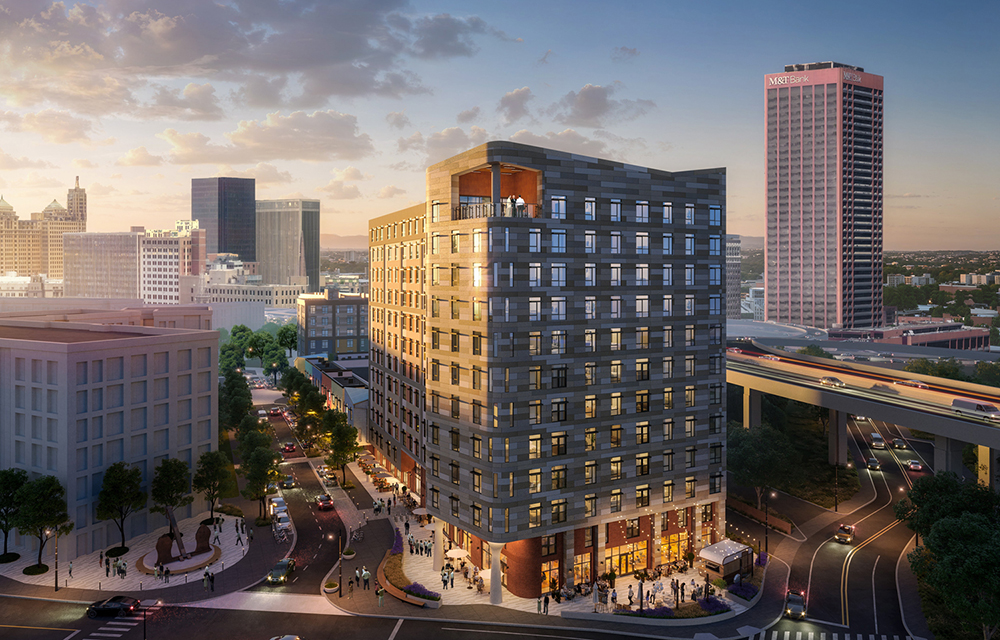

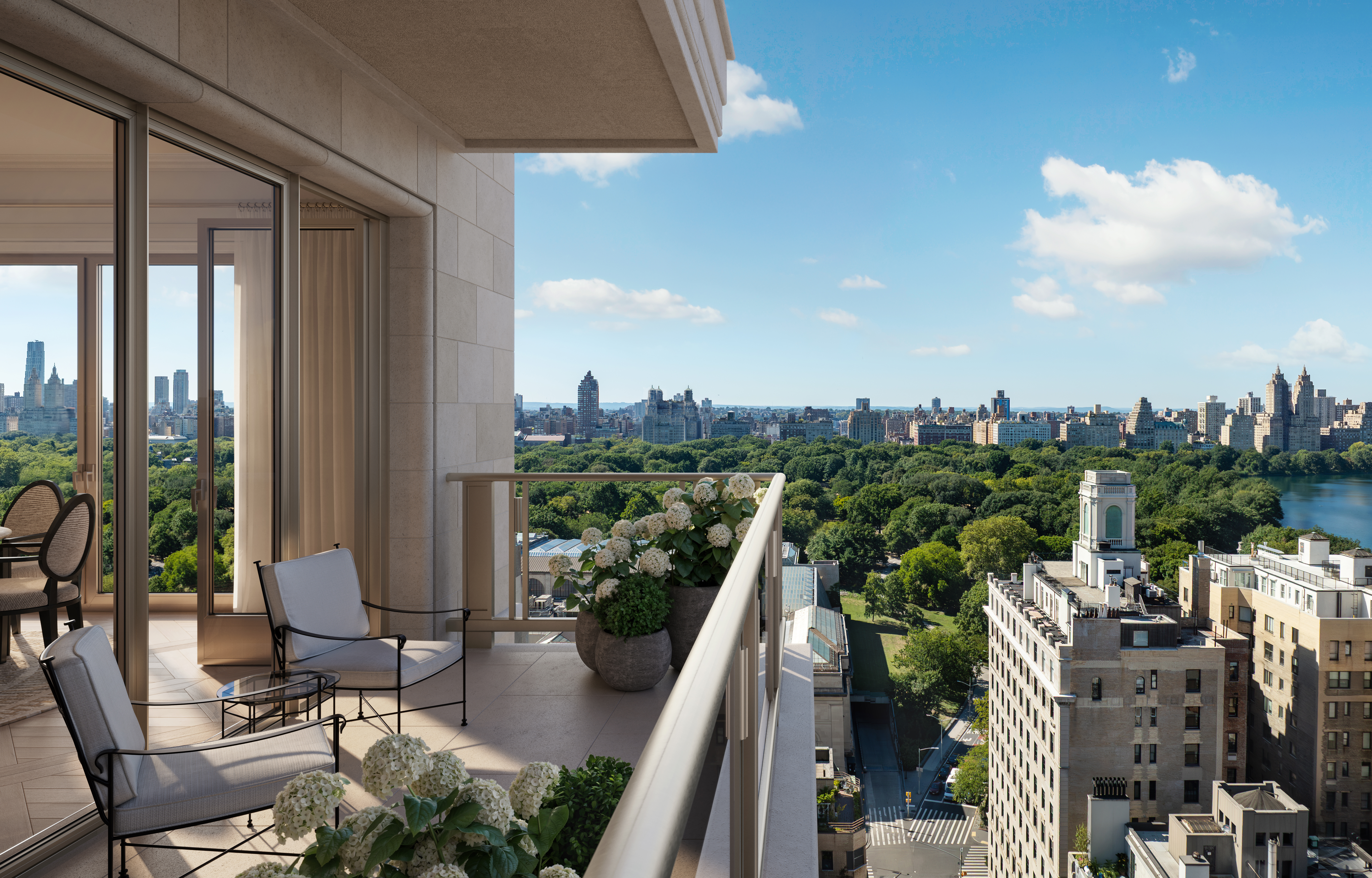
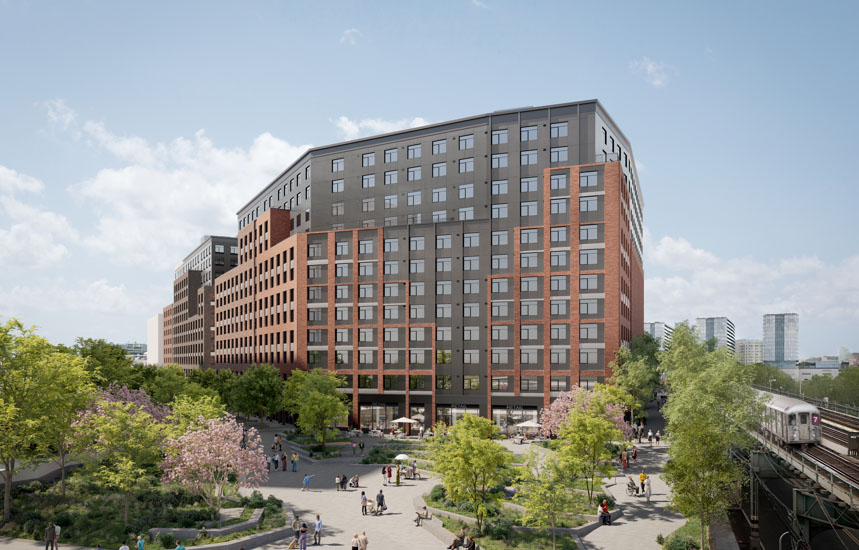

.gif)

.gif)
.jpg)
.gif)